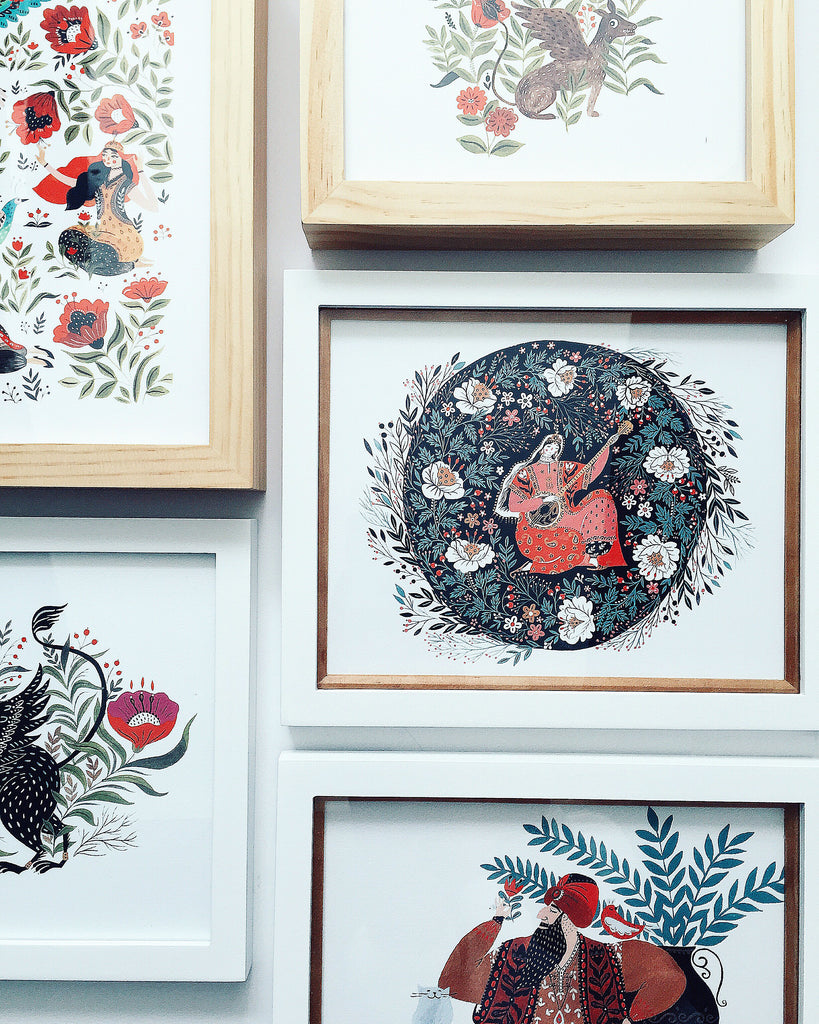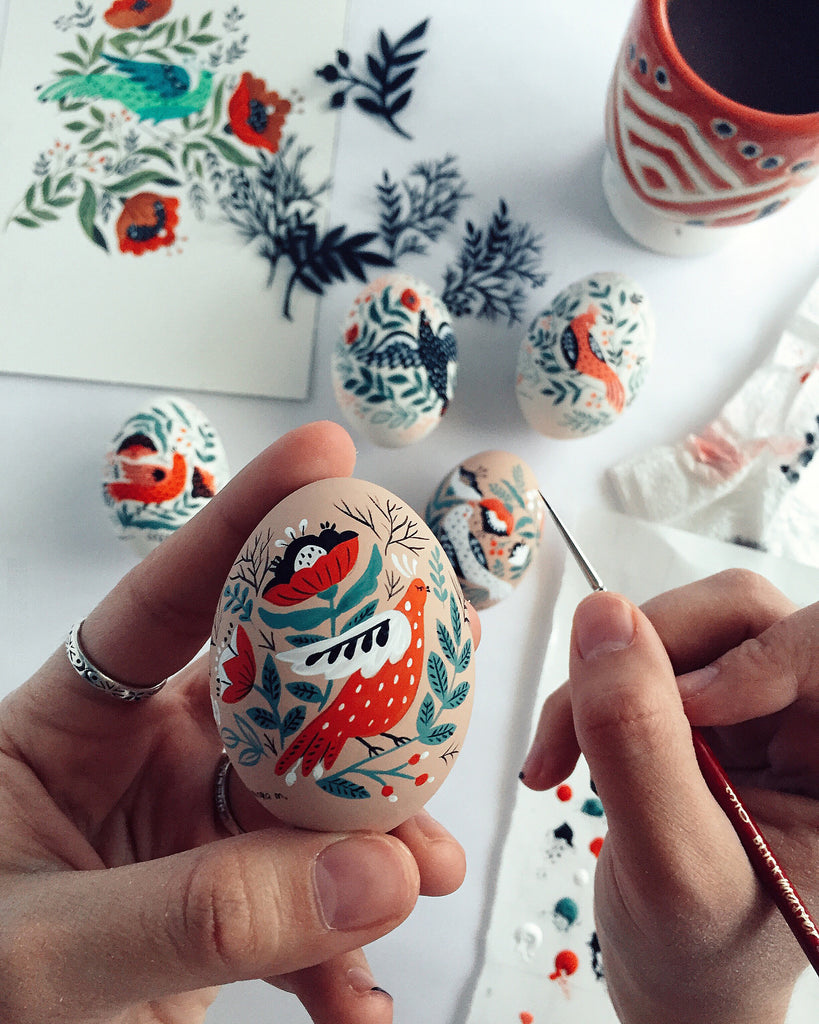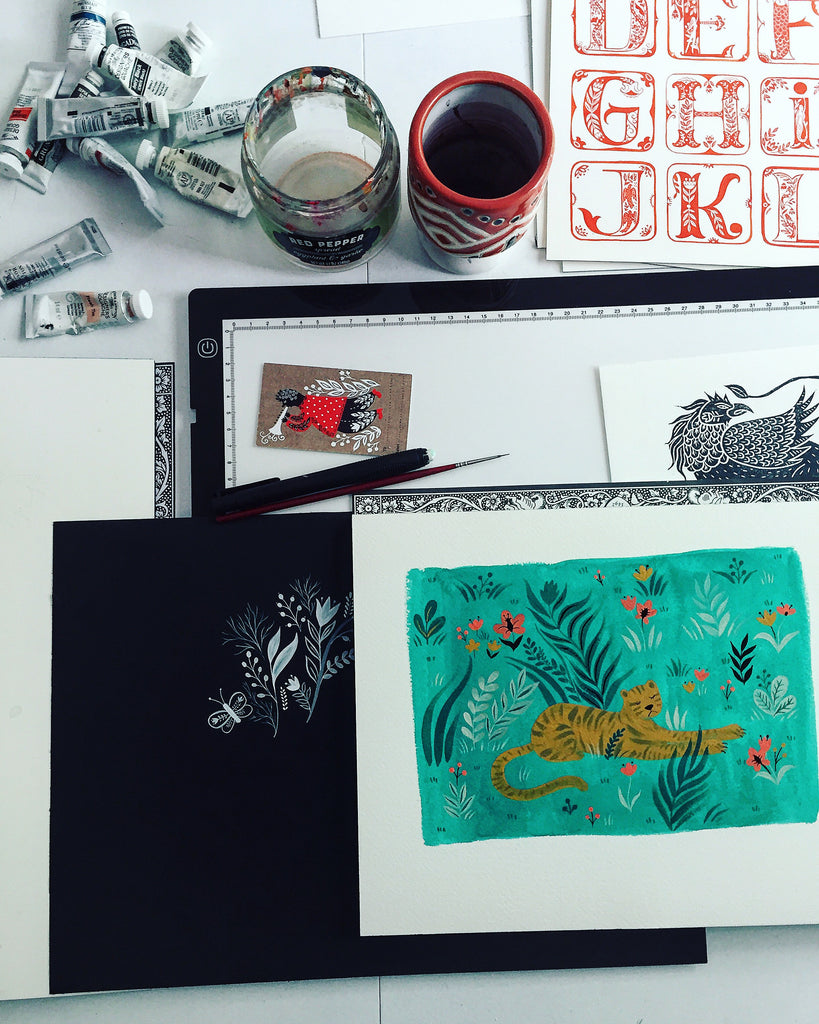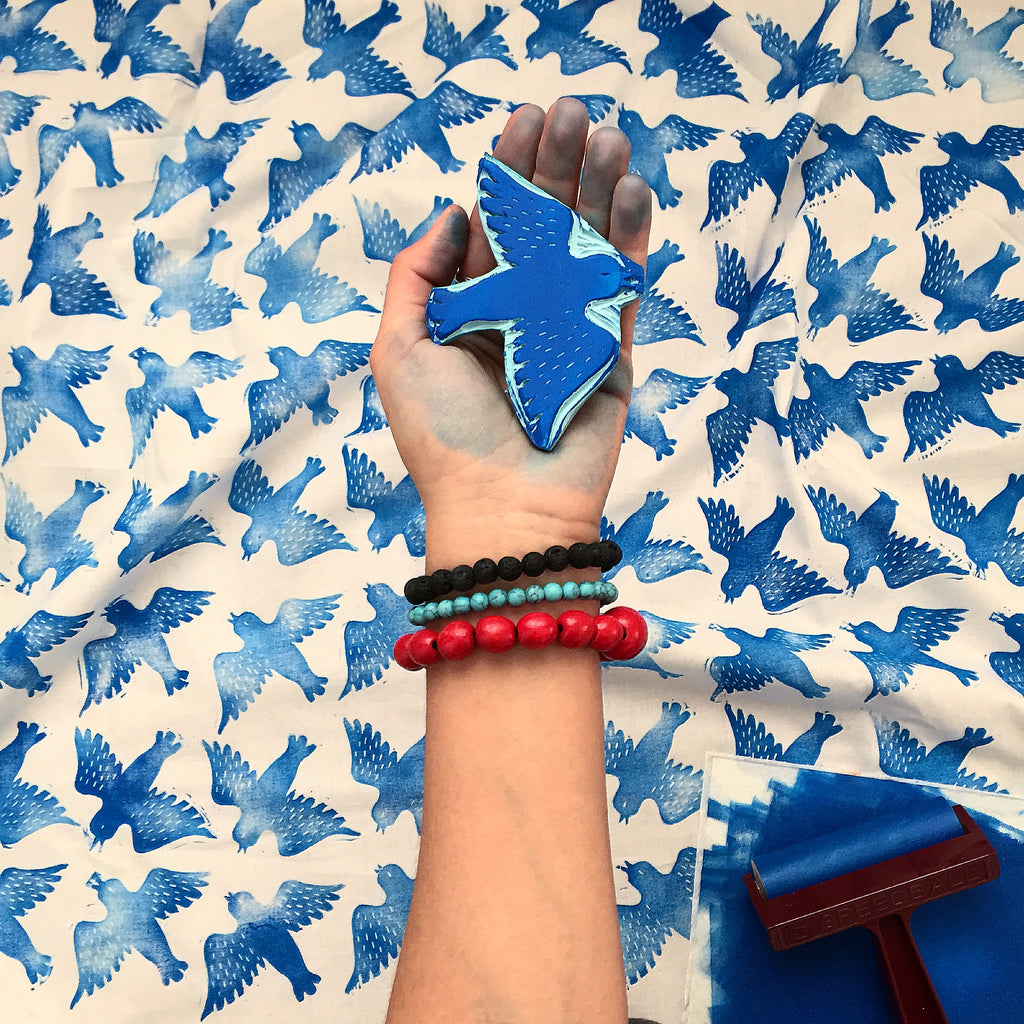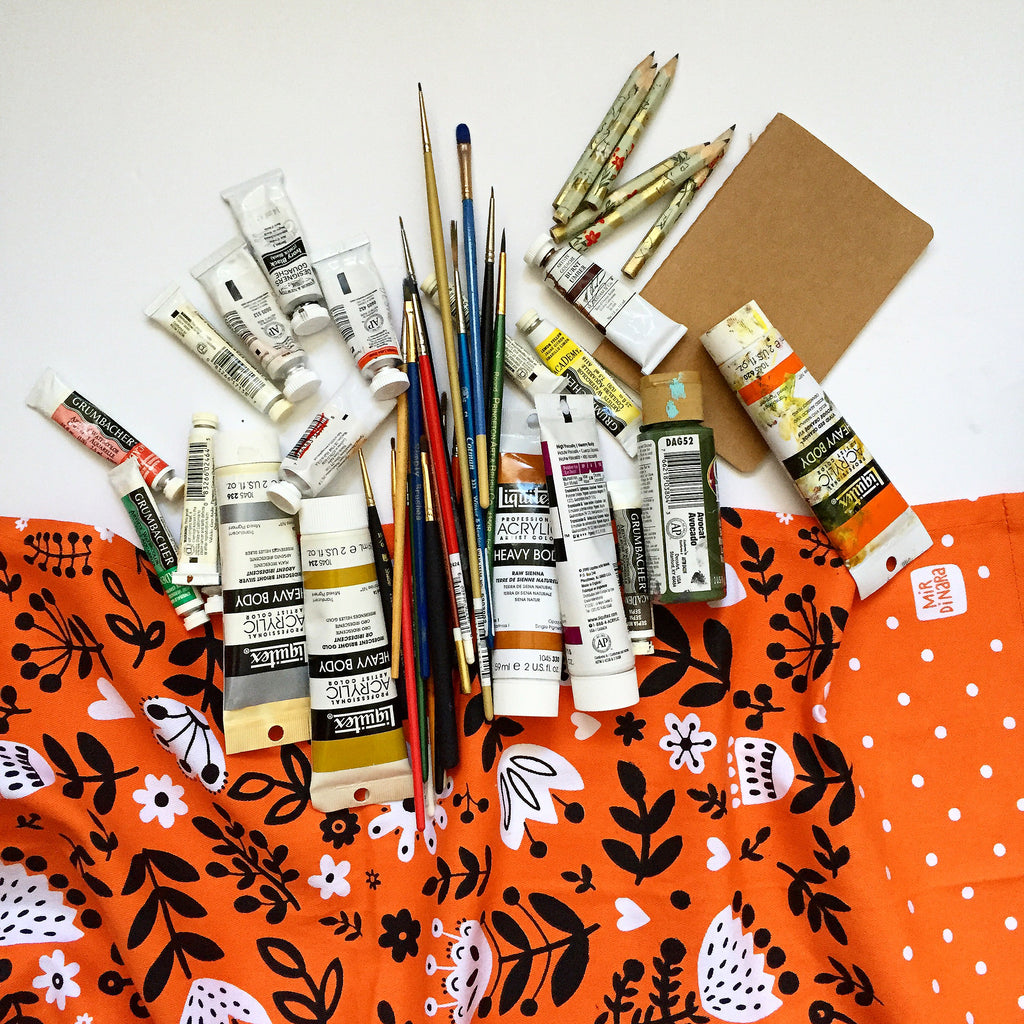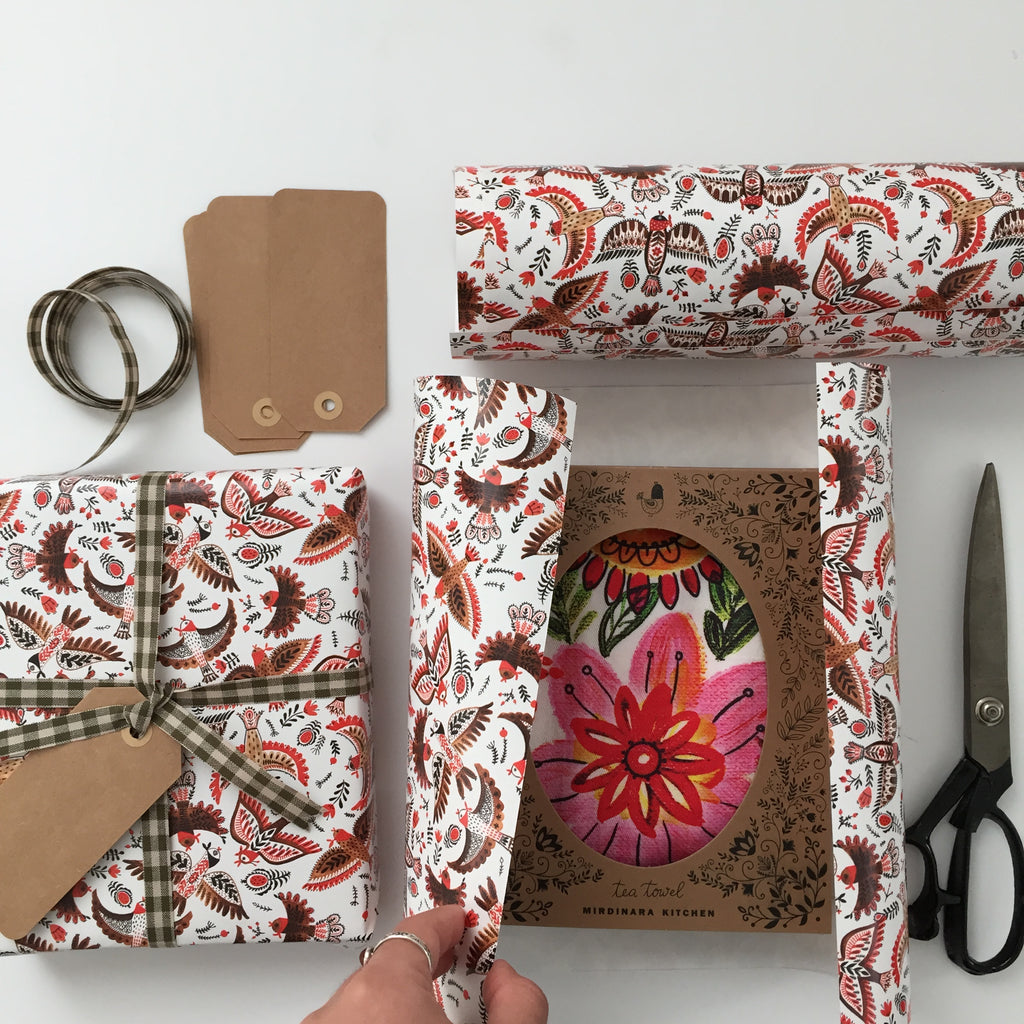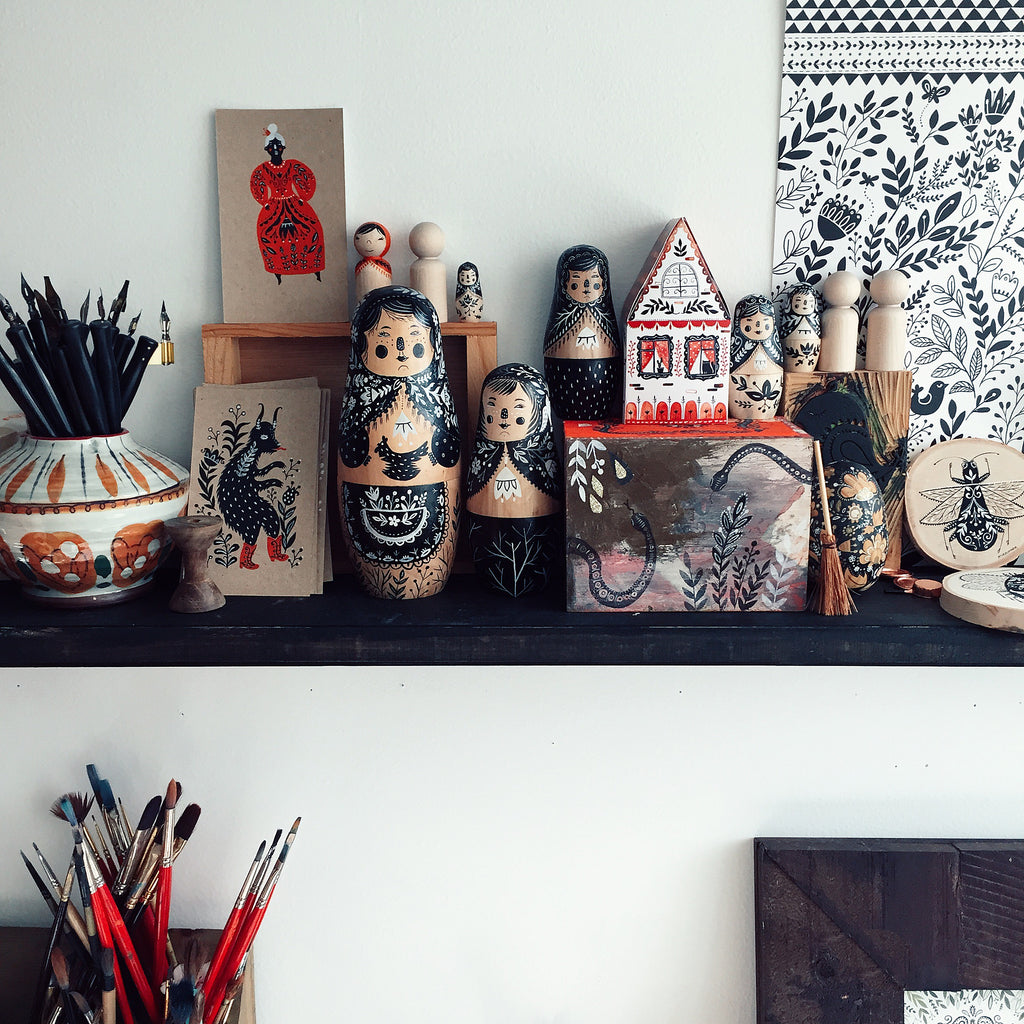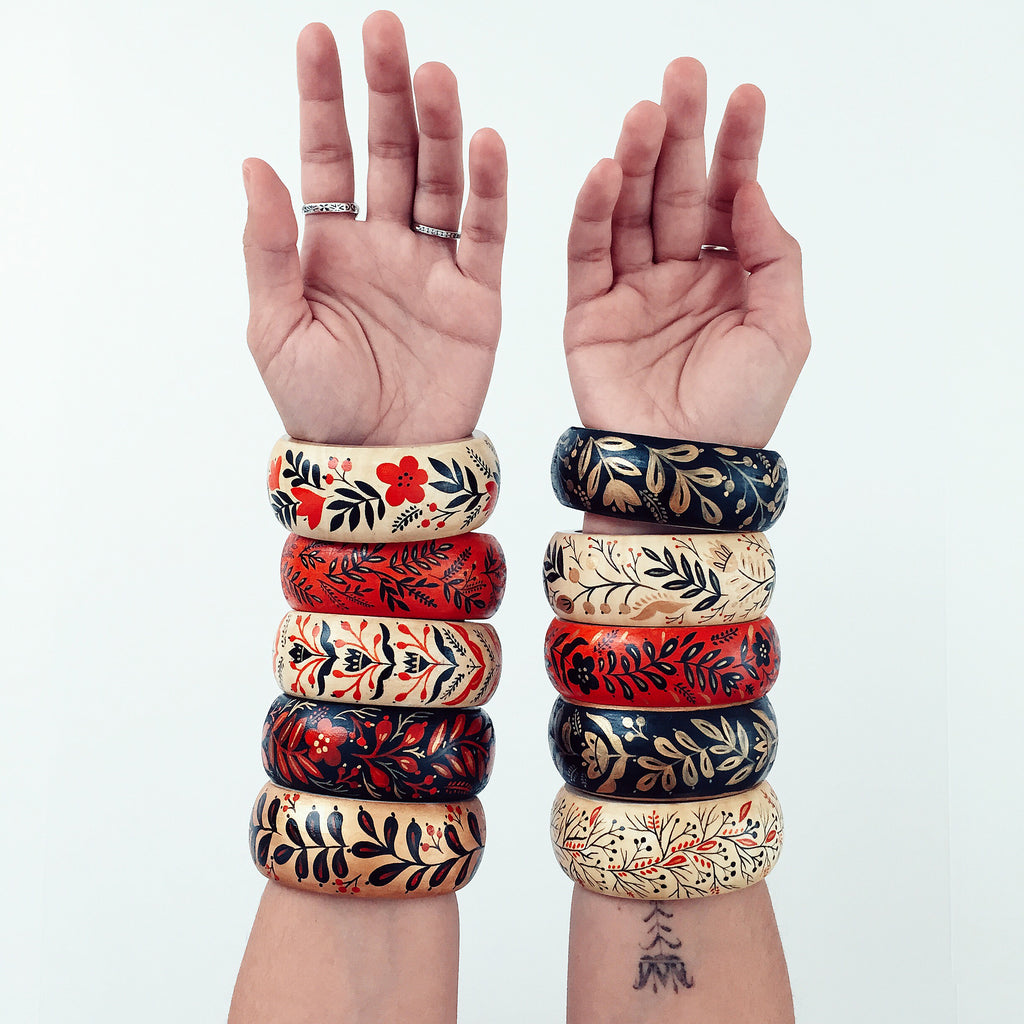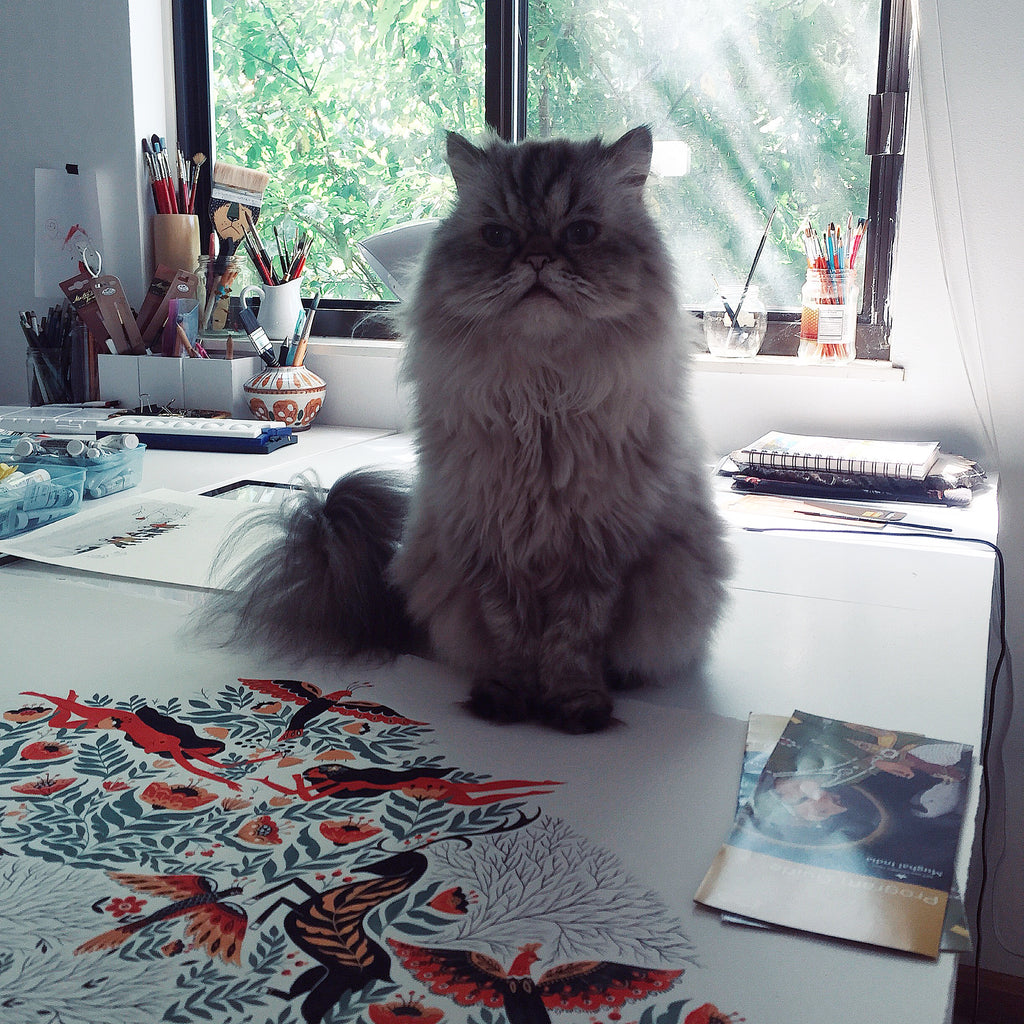Meet the Maker: How Illustrator and Designer Dinara Mirtalipova Uses Folk Art to Connect With Her Roots
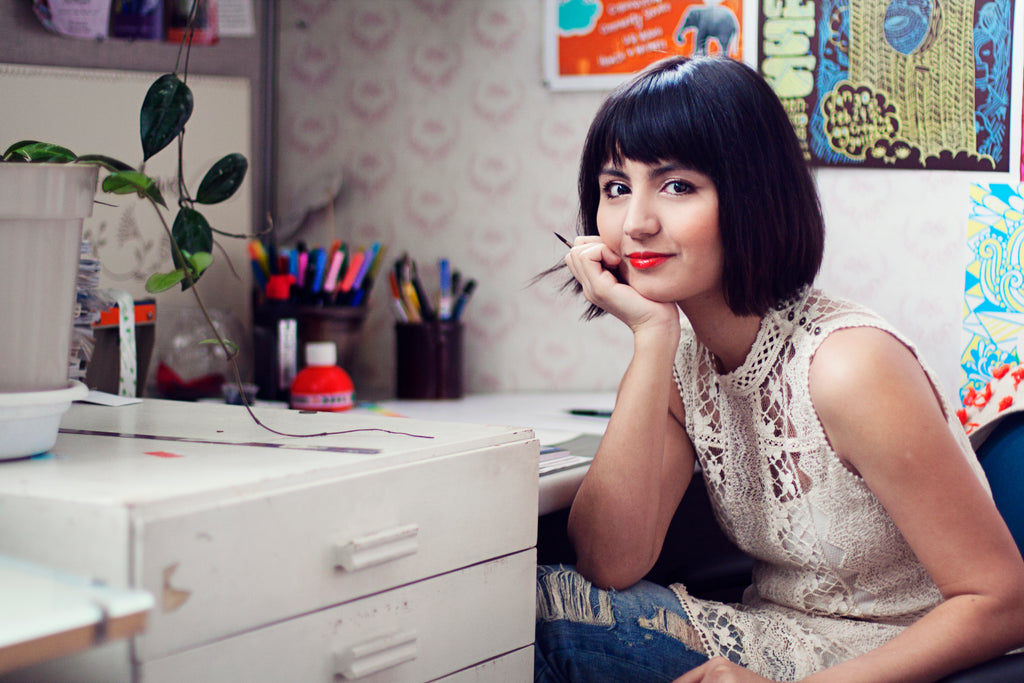
Pattern, though beautiful to look at, has played a much more important role throughout history than just eye candy. It appears throughout the centuries and around the world in the folk art of nearly every culture and civilization, and has helped tell the stories, traditions, and beliefs of its creators since the earliest days of humanity. Today, folk art lives on in the pencils and paintbrushes of artists like Dinara Mirtalipova, the immensely talented hands behind Mirdinara, whose work - inspired by her Uzbekistan roots - feels simultaneously modern and timeless.
Dinara is a self-taught illustrator and designer who was born and raised in the Soviet Uzbek culture and currently resides in Ohio. From paintings to children's books, bracelets to greeting cards, and even hand-painted eggs, everything Dinara touches has her signature style and bold, yet refined palette. In honor of our launch of Dinara's first pattern for Hygge & West, we caught up with her about what pattern means to her, how the folk art of her childhood home influences her, and how she creates hygge in her world.
Hygge & West: Folk art and the natural world play large roles in your work. What is it about those things that inspire you, and what else inspires and informs your work?
Dinara Mirtalipova: For me, folk art is a way to keep the connection with my roots. It's the nostalgia for the songs from my childhood, for the books I read as a teen, for the textiles that surrounded me while growing up. Being interested in cultures and traditions of different nations, I became more and more obsessed with the naive and genuine way of expressing a feeling though a brush stroke.

H&W: You spent your childhood in Tashkent, Uzbekistan, before eventually ending up in snowy Ohio, where you currently reside. How did both of those places influence your style? In what ways do these two places embrace and use pattern differently or similarly?
DM: It's going to sound paradoxical, but I grew more appreciation for folk art and developed my style after finding myself so far away from the place that was full of it. I guess, as most kids in their teens, I felt rebellious and traditional textiles and songs were my last admiration at that time. As a teen, I couldn't wait to leave the nest, to travel, and to become different. As funny as it sounds, after I became a mother myself I realized how nostalgic I felt for the atmosphere I grew up in. Right now those childhood memories influence my style so much that I don't think I could do it any differently.
H&W: Pattern design is a huge part of your work. What does pattern mean to you? What do you think it brings to a home that other design elements can't?
DM: I love patterns! They have a magical power to set the mood for your home. And they are such an inexpensive way to transform the home atmosphere. For example, by simply swapping your curtains, a table cloth, or a bedcover you create a whole new interior design.

H&W: What role does pattern play in folk art and storytelling? How do you use pattern to tell your own story?
DM: Folk art of any nation is full of patterns and colors. For centuries, people illustrated their habitats and life situations on textiles. Patterns are reflections of your life. I personally love happy bright colors inspired by nature and tend to use a limited palette.
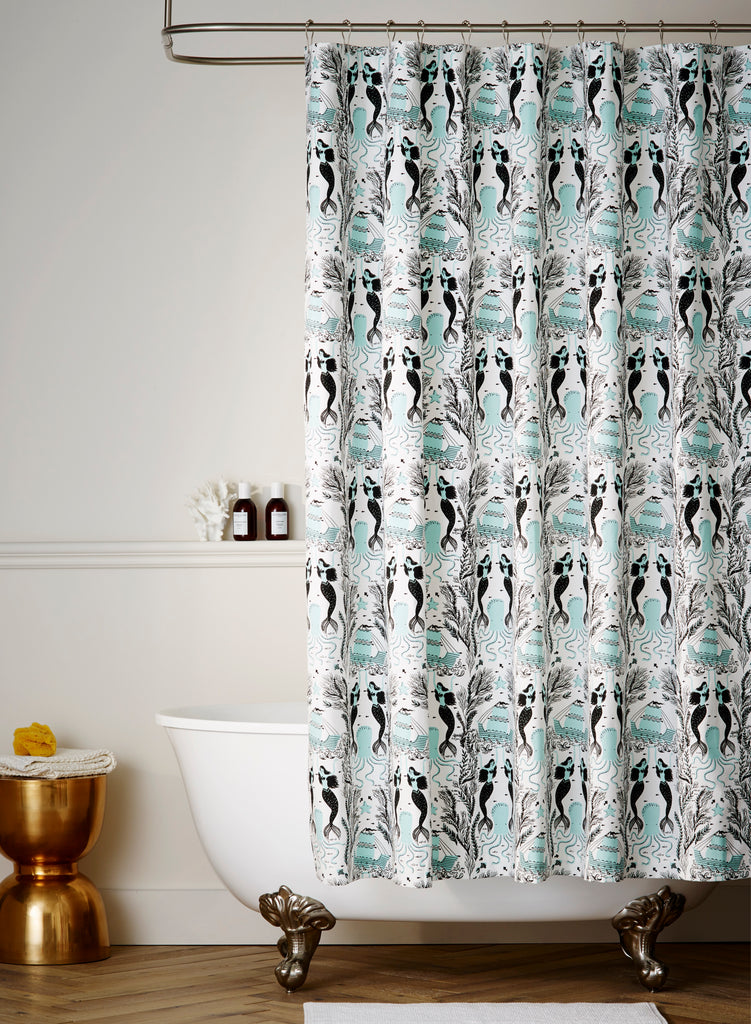
H&W: We're so excited about your first pattern with us, Mermaids, which is available as a shower curtain and wallpaper. What inspired this pattern and its different colorways, and what was the design process like?
DM: I caught the mermaid fever from my little daughter, Sabrina. There was a time when she claimed she was a real mermaid and had been asking me to draw mermaids with her over and over. Mermaids are magical and surreal and very beautiful. Sabrina and I imagine their habitat together; sometimes looking at things through a child's eyes can open your frozen adult mind in unexpected ways, giving you food for the imagination.
Ever since Sabrina was born, we couldn't help but notice how much the girl loves water. Naturally, the bath room became an important place in our home. When this collaboration was taking place, I was excited about the opportunity to create something with mermaids, anticipating how I'm going to transfer our own place.
H&W: What are some of your favorite ways to use pattern in your world, whether at home, in your work, or elsewhere?
DM: I love patterns on home textiles and dishware. I'm not afraid to wear clothes with bold patterns. I'm so happy wallpapers are trendy again, and my husband and I have been thinking of applying wallpapers on certain walls in our house.
H&W: Hygge means comfort, coziness, and finding pleasure in life's simple moments. What represents hygge for you? How do you find or create it in your life?
DM: To me, hygge is simplicity, finding joy in little things. It's the first coffee sip, it's breezy October mornings outside on the patio, it's snuggles under a blanket. Like most women, I love flipping through occasional magazines and catalogs, but when it comes to decorating our nest I still follow my personal intuitive instinct of creating a place that speaks for us and that functions according to our habits.




